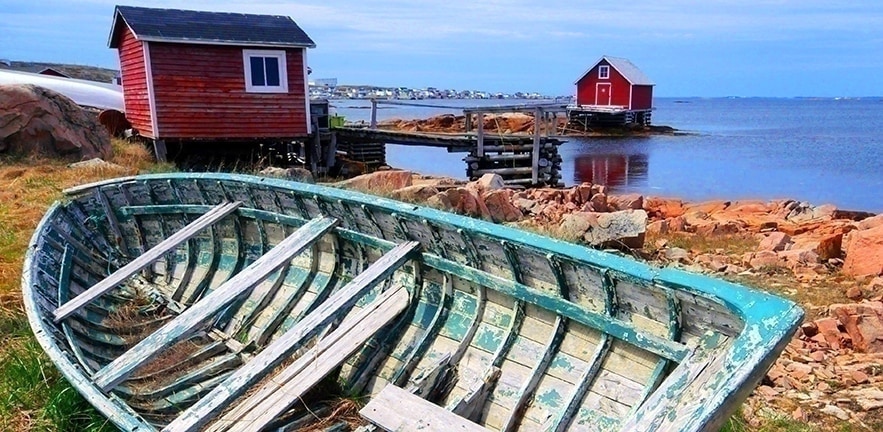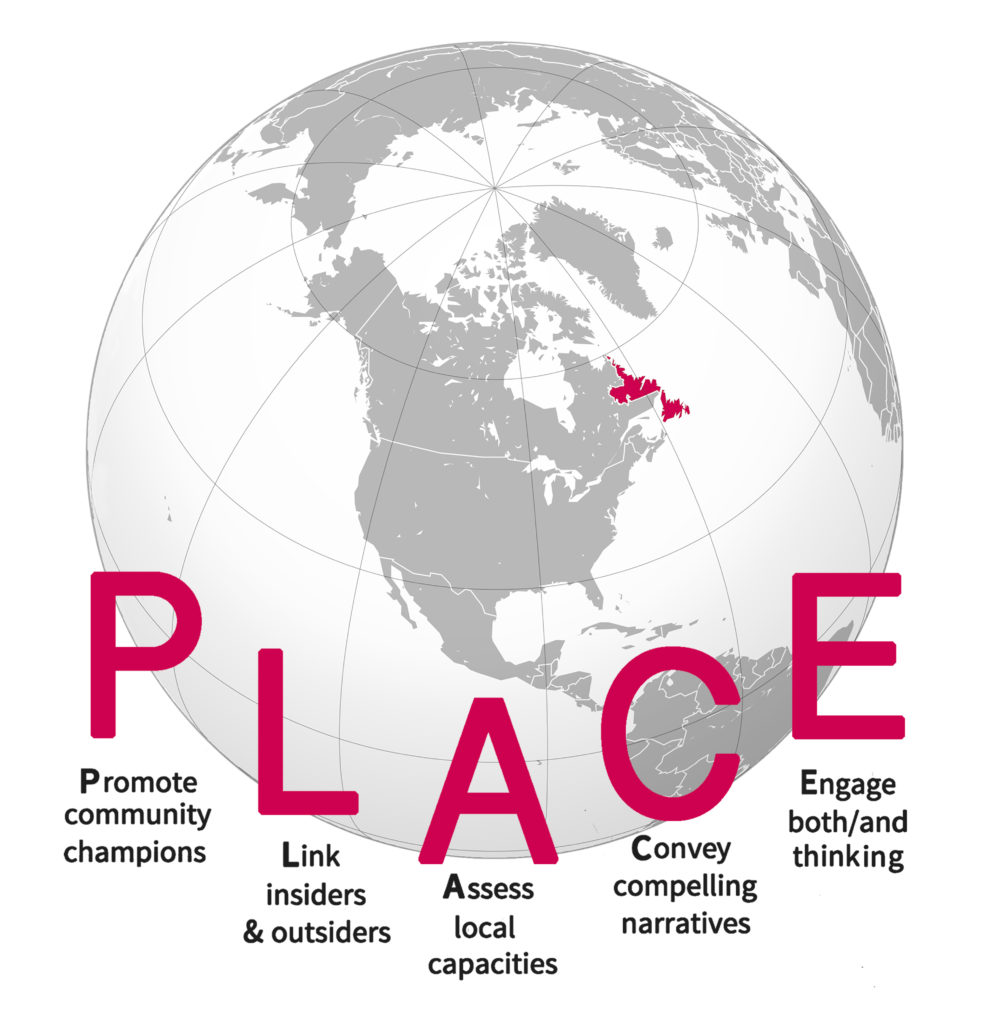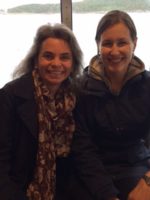
For centuries, residents of Fogo Island, Newfoundland relied on codfish as their primary economic resource. In 1992, the Canadian government announced a moratorium on cod fishing in the North Atlantic Ocean in an effort to replenish the dwindling stocks. The moratorium, however, created a catastrophe of unemployment, forcing many Fogo Islanders who relied on this industry to leave their community, which resulted in a sharp decline in the Island’s population.
Fogo Island’s fate resembles that of countless rural communities globally. Diminishing resources, coupled with the allure of more attractive options in urban centres, leave these populations depleted of economic opportunities, resulting in the disappearance of their unique cultures and distinct ways of knowing.
Fogo Islanders, however, defied the trajectory of decline. Exemplifying this attitude, Shorefast, a registered Canadian charity, was launched in 2006 with the goal of creating economic opportunities for the Islanders, while honoring and promoting their unique culture. Drawing on principles of social innovation (Tracey and Stott, 2017), Shorefast’s approach to community development has drawn global attention (https://shorefast.org/news-and-ideas/). For example, they built upon the island’s culture of hospitality, its remote and beautiful shorelines, and skills in woodworking and quilting. They created the 29-room, luxury Fogo Island Inn, a social business whose surpluses are reinvested in the community. They also launched the Fogo Island Shop, selling locally-made and inspired designer furniture and textiles. They cultivated a market for fresh, sustainably fished cod which sells for premium prices to high-end restaurants in major urban centres, and they established a microlending programme to help local entrepreneurs pursue their own business goals and ideas.
Our team studied Shorefast’s novel approach to community regeneration over the last seven years (Slawinski et al., 2019). Based on our analysis, we identified five principles that we integrate into a “PLACE Model of Community Development”: 1) Promote community champions; 2) Link insiders and outsiders, 3) Assess local capacities; 4) Convey compelling narratives; 5) Engage both/and thinking. We have been using this model to offer support and guidance to communities in Newfoundland and Labrador who are looking for a way forward in a globalised world through community and social enterprise.

1. Promote community champions
Finding and rallying those who believe in the future of a place is critical because, even in dying communities, people are often afraid of change. Since Shorefast launched its initiatives, several Fogo Islanders have moved back ‘home’, and have become champions for the place, actively engaging in advancing new opportunities. Shorefast has put considerable time and energy into developing the capacities of their employees, and this capacity building has enhanced their confidence, while generating hope in the future of the island. Equipped with this heightened self-assurance, community members increasingly step forward as champions eager to help build a more vibrant community. Champions nurture others to become future community leaders resulting in exponential growth to help the transformation of the community.
2. Link insiders and outsiders
Champions can include people born and raised within the community, as well as those who come from outside. Each bring different resources. Insiders, including community volunteers, local government representatives and business owners, have unique and deep knowledge of their place. Outsiders, such as recent residents, media, and academics bring new skills and perspectives into the community, often helping insiders to see the value of their place with fresh eyes. New opportunities for community renewal can emerge when insiders and outsiders work together. For example, Shorefast invited world-class designers to Fogo Island to co-create unique place-based furniture with local woodworkers. Their unique pieces now adorn the Inn, contributing to its place-based appeal, and are sold in the shop, generating further jobs and revenue for the community.
3. Assess local capacities
Declining communities often leave people focused on what they do not have or what they are lacking. Rebuilding a community however depends on starting with its current assets. To develop Fogo Island, Shorefast members drew on approaches from Asset Based Community Development (ABCD) (Kretzmann and McKnight, 1993) and Appreciative Inquiry (Cooperrider and Srivasta, 1987) and started by asking the community questions such as “What do we have? What do we love? What do we miss?” They emphasised resources such as their natural, cultural and human capital, identifying physical resources such as unused churches and other buildings, skills such as boat building and quilting, and a natural cultural inclination toward hospitality. Shorefast’s recommendations for regeneration built upon these resources.
4. Convey compelling narratives
Successful community development depends on finding and sharing positive stories about the place and its people. Such narratives can shift mindsets and motivate new behaviours. The right stories can reframe challenges as opportunities, reframe scarcity thinking to explore abundance, and invite people to expand their approaches to problem solving. Compelling stories can motivate people to reflect on how others have overcome challenges in the past, and inspire them to remain hopeful and committed to the ongoing work. Narratives can be a powerful motivational tool, especially when leaders find the right messages and repeat them.
5. Engage both/and thinking
Community development work is full of tensions and contradictions, such as those between the old and the new; between tradition and innovation; between the existing community and the future one; and between local and global development. For instance, spending money on improving roads may compete with investment in preserving heritage structures. However, there are a number of ways in which community champions navigate tensions. They can embrace the ambiguity; keep the tough conversations going; sit in active disagreement; and watch for the right path to emerge. Community champions shouldn’t be afraid to disagree or to hold off on making important decisions until they’ve worked through the tensions and found a more holistic approach to a problem. As Shorefast CEO Zita Cobb stresses, life depends on learning “to live in the rhythm of opposites.”
The five principles of the PLACE model can act as guideposts to help champions engage in social innovation and strengthen their communities. On Fogo Island, Shorefast has put place at the centre of its decision-making. This emphasis has translated into initiatives that are allowing Fogo Island to become more resilient in a globalised world, and to offer inspiration to communities with similar challenges.
References
Cooperrider, David L., and Suresh Srivastva. 1987. ‘Appreciative inquiry in organizational life.’ Research in Organizational Change and Development, 1:1: 129-169.
Kretzmann, J., & McKnight, J. 1993. Building Communities from the Inside Out: A Path Toward Finding and Mobilizing a Community’s Assets. Chicago: ACTA Publications.
Slawinski, N., Winsor, B., Mazutis, D., Schouten, J., & Smith, W. 2019. ‘Managing the paradoxes of place to foster regeneration’. Organization & Environment. Forthcoming.
Tracey, P. & Stott, N. 2017. ‘Social innovation: A window on alternative ways of organizing and innovation’. Innovation, 19:1: 51-60.

Natalie Slawinski is an Associate Professor of Strategic Management at Memorial University, Newfoundland, Canada. Natalie is also a Research Fellow for the Cambridge Centre for Social Innovation, University of Cambridge Judge Business School.
Wendy Smith is a Professor of Management, for the University of Delaware, US. Wendy is also a Research Fellow for the Cambridge Centre for Social Innovation, University of Cambridge Judge Business School.


Leave a Reply